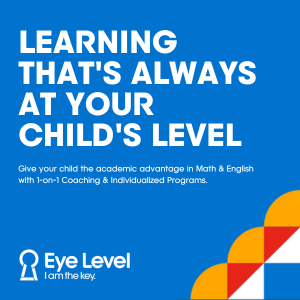Malaysia has an excellent selection of curricula tailored to learners’ various requirements and goals. It is home to over 540 schools ranging from international, private, public, religious, and more. Malaysia’s curriculum is as diverse as its population, with elements from the British, American, and Australian systems. Each of these schools differs based on its curriculum.
Two popular school options in Malaysia are international schools and public schools. International schools provide a dynamic international education and schooling environment for an international community. In contrast, public schools are primary or secondary schools funded and controlled by the local/state and/or federal governments.
Here is the difference between the international curricula and the national curriculum.
International Curricula
Since 2012, the demand from local parents for international school education has increased, resulting in the establishment of more international schools in Malaysia. Today there are over 210 international schools in Malaysia. Most students start their international school education in their primary years, while some begin during their secondary school years. Some students begin their international school education from preschool.
The British, Cambridge and American curricula are amongst the most popular types of curricula in Malaysia that the Education Ministry has approved. Most of these schools cater to children from preschools until high school or pre-university levels, requiring students to take an external international examination, such as the International Baccalaureate Diploma, IGCSE, or A levels.
Here is a summary of some of the curricula offered by international schools.
British Curriculum
Many international schools in Malaysia offer a British-based curriculum that follows the National Curriculum (for England). This curriculum sets out the programme of study and targets for all subjects and is divided into year blocks called Key Stages (KS). Learners are formally assessed at the end of each key stage. The first KS is Early Years for learners ages two to five followed by the primary level called the KS1 (ages 5 to 7) and the KS2 (ages 7 to 11). Secondary levels consist of KS3 (ages 11 to 14) and KS4 (ages 14 to 16). At the pre-university level, learners ages 16 to 18 go through KS5. The various key stages help teachers to have an overview of a learner’s academic progress.
Learners sit for the IGCSE examination at the end of KS4 and A levels at the end of KS5. Both the IGCSE and A levels are recognised worldwide. The International General Certificate of Secondary Education is an internationally recognised qualification for students aged 16 to 19 years who want to study in an international school. It is a qualification offered by the Cambridge Assessment International Education (CAIE), which has been providing qualifications since 1858.
International Baccalaureate (IB)
The IB programme encourages academic rigour and emphasises students’ personal development. The IB programme aims to develop inquiring, knowledgeable and caring young people who are motivated to succeed.
The IB programme includes the IB Primary Years Programme (PYP), IB Middle Years Programme (MYP), IB Diploma Programme (DP) and IB Career-related Programme (CP). These programmes aim to develop internationally minded people who recognise their common humanity and shared guardianship of the planet to create a better and more peaceful world.
American Curriculum
The American Curriculum is a rigorous, standards-based system that aims to educate a learner for a successful future.
The American Curriculum is divided into three stages: Elementary School, Middle School and High School. In Elementary School, students aged 4 to 11 enter Kindergarten to Grade 5. Students aged 11 to 14 progresses to Middle School which covers Grade 6 to Grade 8. They then move on to High School until the age of 18 to complete Grades 9 to 12. The core subjects at each level are English language, Arts, Mathematics, Science and Social Studies. In addition, students are exposed to Visual and Performing Arts, Foreign Languages, Physical Education and Technology.
Malaysian Curriculum
Both public and private schools in Malaysia offer the Malaysian curriculum; however, for expatriates who desire a local curriculum for their child, private schools should be considered as enrolling an expat child in public schools is challenging.
In Malaysia, children attend school from ages 7 to 17. Students in primary (age 12) and lower secondary school (age 15) do not have any major exams to sit for since early 2022, as the Education Ministry abolished the Ujian Penilaian Sekolah Rendah (UPSR) and Pentaksiran Tingkatan Tiga (PT3) examinations and replaced it with a strengthened School-Based Assessment (PBS). However, upper secondary school students must take Sijil Pelajaran Menengah (SPM) in Form 5.
Students can pursue Form 6 or tertiary education through public universities, polytechnics and community colleges (IPTA – Institut Pendidikan Tinggi Awam) or private higher education (IPTS – Institut Pendidikan Tinggi Swasta) after SPM. An array of subjects is taught in primary school, including Science, Mathematics, and History. In secondary school, lower forms are exposed to additional subjects like Geography and History, while upper forms start to choose between science and art as their preferred streams.
Here is a list of subjects offered in both primary and secondary school.

*Some schools offer different elective packages. Check with your respective school on what subjects they offer
Both public and private schools offer an array of extracurricular activities as part of their curricula. However, the type and facility support for these activities may vary for each school. Many of these schools do not have the latest facilities such as computers and furniture as the fees are much cheaper than international schools. Nevertheless, this does not mean that students will not have a good schooling experience as parents are actively involved with their children’s schooling experience.
To conclude, international schools and public and private schools have different offerings in terms of curricula. International schools offer various curricula with their own pathways, whereas the Malaysian curriculum offers only one. No matter how complex the needs and wants of each family are, there is a curriculum that will best suit each child’s academic journey.













![[elc International School] NO SHORTCUTS: WHY THINKING STILL MATTERS](https://mint-edm.sgp1.digitaloceanspaces.com/production/XTvbqZxxQQxUHjyDcClxCortA5SxNs.png)






















